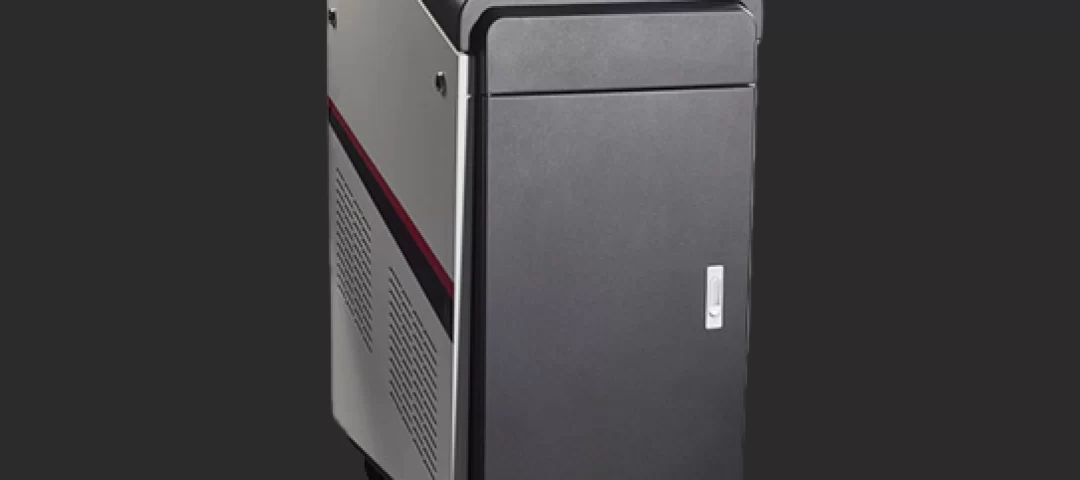Ultrasonic cleaning uses an ultrasonic generator issued by the cross-frequency signal, through which the transducer is converted into a cross-frequency mechanical oscillation and spread to the medium, that is, in the cleaning fluid “bubble” form, the phenomenon of rupture. When the “cavitation” in the object is washed at the moment of surface rupture, resulting in far more than 1000 atmospheric pressure impact, resulting in the object’s surface, holes, gaps in the dirt are dispersed, rupture, and peel off, so that the object of purifying and clean.
Water droplet laser cleaning relative to the advantages of ultrasonic cleaning
Laser cleaning technology uses high-energy laser beam irradiation of the workpiece surface so that the surface of the dirt, rust, or coating instantaneous evaporation or stripping, practical high-speed removal of cleaning object surface adhesion or surface coating, to achieve a clean process. It is a new technology based on the interaction effect of laser and material.
The difference between laser cleaning and ultrasonic cleaning is that the laser cleaning operation is very convenient, the general handheld cleaning can be, without any media directly on the surface of the object can be cleaned, for extensive area cleaning and precision parts cleaning effect is excellent, the working temperature in -5 ℃ ~ 50 ℃ can be, and ultrasonic need to add cleaning agent, the higher the power density of ultrasound, the stronger the cavitation effect, the faster the speed, the cleaning effect The better, but for the precision of the surface finish is very high objects, using a long time of high power density cleaning will produce cavitation, corrosion on the surface of the object. On the other hand, ultrasonic cleaning workpiece volume is small, can not remove submicron particle pollution, can not remove the coating layer, etc.; this laser cleaning is not a problem.
Water droplet laser cleaning relative to the advantages of ultrasonic cleaning
Laser cleaning features:
1, non-abrasive, non-contact cleaning to avoid secondary pollution;
2, high cleaning accuracy, controllability;
3, no consumables, environmental protection;
4, Laser cleaning can remove different types and thicknesses of adhesions on the surface of various materials;
5, easy to control, power can be handheld or with the robot to achieve automated cleaning;
6, high cleaning efficiency, save time;
7, system stability, long life;
8, one-time investment, economical and efficient.
In modern high-end manufacturing cleaning areas such as aerospace, rail transportation, automotive manufacturing, and mold industry, there are long-standing cleaning difficulties, high precision requirements, slow work efficiency, and other pain points; the market demand has also given rise to higher industry requirements of the laser cleaning industry.
For example, the mold’s quality directly affects the tires’ quality. The tire mold surface will have carved patterns or other patterns. The mold will often be used in high temperature, high humidity environments, so there will be a lot of rubber or other residues left in the carved groove; when the accumulation to a certain extent, it will affect the shape of the mold structure eventually lead to the production of products for inferior, so it is essential to keep the tire mold clean.
The traditional cleaning process uses ultrasonic cleaning machines. Still, ultrasonic cleaning can hurt the production of molds because the process is time-consuming and requires the disassembly of some molds during cleaning. In addition, this process can only be used for molds that have been cooled. Only after the mold is cooled, cleaned, and reheated can a new round of production be restarted, which is time-consuming and labor-intensive. Laser cleaning of molds mainly uses the principle of laser cleaning to remove the dirt on the surface of the mold and the residues from the production, which is a physical cleaning, efficient, environmentally friendly, and pollution-free, with a good cleaning effect; traditional cleaning process cleaning mold methods are diverse: sandblasting, dry ice, grinding, chemical scrubbing, etc., the cleaning environment is not good, and may produce unnecessary damage. Laser cleaning, instead of the original ultrasonic cleaning, the use cost is reduced by more than 50% and can significantly improve the overall product qualification rate.
Laser cleaning and ultrasonic cleaning, chemical etching cleaning, and other traditional cleaning methods compared with obvious advantages: it is efficient, fast, low cost, the heat load on the substrate and mechanical load is small, cleaning for non-damage; no damage to the health of the operator; cleaning process is easy to achieve automatic control, to achieve remote control cleaning. Shenzhen water drop laser specializes in the laser cleaning business and is the head of the domestic laser cleaning field; tire mold cleaning has accumulated a lot of experience. Moreover, now that government agencies pay more attention to environmental protection, many traditional cleaning processes are gradually being replaced, laser cleaning will become the mainstream industrial cleaning, and the future is promising!


